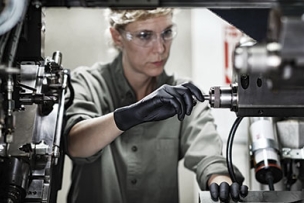Honeywell’s safety innovations protect the livelihoods of 500 million workers. With a legacy spanning over a century, Honeywell provides comprehensive PPE solutions from head-to-toe. Honeywell offers a vast of product solutions from brands you trust like Miller®, Uvex®, Howard Leight, North®, and Fibre-Metal®.
With the prevalence of personal protective equipment in everyday life, it’s important to know what kind of mask will work best for your environment. The Centers for Disease Control and Prevention advises the everyday use of cloth face coverings to slow the spread of COVID-19, but different types of PPE can serve different purposes, and knowing how to wear each type of covering properly is essential to help protect yourself and those around you. While Honeywell encourages you to learn more about the differences between face covers, masks, and respirators from government literature, they highlight below some of the differences between face covers, masks, and respirators and the function each serves.
Respirators
Surgical N95 Respirators
Surgical N95 respirators provide respiratory protection and are designed to achieve close facial fit with 95% filtration efficiency of airborne particles. Surgical N95s offer fluid-resistance in addition to particulate filtration. These are approved by NIOSH, ASTM and CFR and intended for use in healthcare settings.
N95 Respirators
Like surgical N95 respirators, N95 respirators are designed to achieve a close facial fit and 95% filtration efficiency of airborne particles and are intended for use in healthcare settings. Some N95 respirators have valves, which in industrial environments is fine, but they are not recommended by CDC as source control because they don’t protect others. N95 respirators are approved by NIOSH and CFR regulatory standards.
Surgical & Procedure Masks
Surgical Mask
Surgical masks are disposable devices that act as a barrier between the wearer and potential contaminants in the environment and offer 95-98% filtration efficiency. This type of face cover typically has ties or a headband, which secures the mask more closely to the wearer’s face than ear loops and may be used in the operating room, as well as in some industrial and consumer settings.
Procedure Mask
A type of surgical mask that generally has ear loops or a headband and is designed for short procedures or for source control (for patients and visitors), procedure masks are not designed for use in the operating room. Like other medical masks, it is available in a range of performance levels (ASTM 1, 2 and 3), dependent on the risk that is present and offer 95-98% filtration efficiency.
Face Covers
Multi-Layer Face Cover with Filters
A multi-layer barrier to help prevent respiratory droplets from traveling into the air and onto other people when the person wearing the mask coughs, sneezes, talks, or raises their voice. Face covers alone are not tested to any standards. They are not considered PPE. However, certain filters have been tested for filtration efficiency and these face covers can be up to 97% effective when worn with a filter.
Cloth Face Cover
Normal cloth face covers are a simple cloth barrier to help prevent respiratory droplets from traveling into the air and onto other people when the person wearing the mask coughs, sneezes, talks, or raises their voice. Face covers are not tested to any standards. They are not considered PPE and are intended for use by the general public and employees in non-healthcare environments.
Face Cover with Valve or Vent
Some face covers come with a built-in valve or vent that is intended to reduce exhalation resistance, which makes it easier to breathe (exhale). However, studies show that it also allows particles to escape. These face covers are not approved by any regulatory standards and, depending on the material, can be between 4-15 percent filtration efficient. The CDC recommends against using this type of face cover because it does not protect others.
Bandana, Scarf or Gaiter
While typically considered a household item or cold-weather accessory, in the absence of any other kind of face cover or mask, people have used bandanas and gaiters as a last resort to cover their nose and mouth while in public. Like face covers with a valve or vent, these face covers are not approved by regulatory standards and, depending on the material, can be between 4-15 percent filtration efficient.
No matter the type of face cover you wear, make sure it is fitted properly to guarantee its effectiveness. Your face covering, mask or respirator should cover your face and chin, fit snugly but comfortably against the side of your face, be secured with ties or ear loops, include a filter or multiple layers of fabric, and allow for breathing without restriction. For cloth face masks, they should also be made of a material that is easily washable without damage or change in shape.
Previously Featured on Honeywell's News and Events blog.








Talk to Us!
Leave a reply
Your email address will not be published. Required fields are marked *